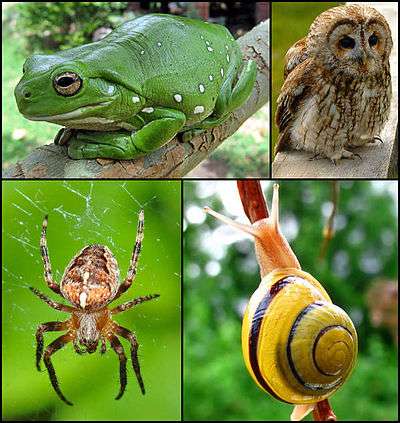Dichotomous Key
This e-book can help with the identification of unknown organisms or species. The method adopted uses mostly a dichotomous key based on two choices, which is either in written format or pictographic, or both. For convenience, there may be polytomous sections within the book.
A written dichotomous key presents the reader with two statements that describe certain characteristics. The statements should be mutually exclusive for the key to work efficiently. For example, 'it is either red or it isn't'. On selecting one, the reader is presented with the next couplet choice in the key and so on - to eventually arrive at an identification. This key uses hyperlinks to navigate.
Classification with keys

Taxonomic systems are based on similar characteristics or increasingly on DNA analysis. The systems attempt to model the natural order, thus helping research by classifying different organisms. Taxonomic systems vary, but the following system has been found useful:
- Domain
- Kingdom
- Phylum (called Division in plants)
- Class
- Order
- Family
- Genus
- Species
There are many sub units in use.
Keys usually start with a first selection from the following:
- Plantae - Plants. Typically multicellular, sessile organisms. Their cells have walls composed of cellulose. They are autotrophs, and photosynthesize (with exceptions).
- Animalia- Animals. Typically multicellilar, motile organisms. They lack rigid cell walls and are heterotrophic (with exceptions).
- Protista - (A contested group of around 40 phyla of eukaryotic organisms) Typically simple, eukaryotic unicellular microorganisms or multicellular microorganisms without specialized tissues.
- Fungi - Include yeast and molds. Typically eukaryotic, multicellular organisms. Like plants, they are sessile, but unlike plants they lack chloroplasts and are heterotrophic (with exceptions).
- Bacteria - Ubiquitous, single-celled prokaryotes a few microns in size, with varying morphology.
- Archaea - Relatively small group of single-celled prokaryotes more closely related to the eukaryotes than to the bacteria.
How the key works
- Go to start
- Use choices given to arrive at the lowest possible level
- Organism is identified as much as possible
If the description at each level does not appear accurate then back up to some earlier couplet and start over, questioning each decision more carefully. Finally, a verification step is important by comparing the specimen with any further details available including description,photographs and other reference. The habitat and location where the sample was collected is useful for plants. If the description and other information satisfactorily confer, then a correct identification is possible.
Start Here
Which Kingdom does it belong to?
Animalia
How many legs does it have
Plantae
What kind of plant is it?
- Hornwort
- Liverwort
- Moss
- Fern or Fern Ally
- Cycad
- Ginkgo
- Conifer
- Flowering Plant
No legs
What kind of animal is it?
- Barnacle
- Comb jelly
- Coral
- Fish
- Jellyfish
- Sea Anemone
- Slug
- Snail
- Shark
- Snake
- Sponge
- Stingray
2 Legs
What kind of animal is it?
4 Legs
What kind of animal is it?
Many legs
What kind of animal is it?
- Starfish
- Spider (Aranea), also Amblypygi, Solifugae, and Pantopoda (sea spiders)
- Tick
- Scorpion (Scorpiones), also Palpigradi, Amblypygi, Solifugae, Thelyphonida, Schizomida, and maybe Pseudoscorpionida just in case
- Centipede
- Millipede
- Shrimp (Dendrobranchiata & Caridea), also Cumacea, Stomatopoda, and Stenopodidea (just in case)
- Krill
- Pillbug
- Lobster or Crayfish (Astacidea) also achelata
- Crab (Brachyura) also anomura (hermit crabs)
- Insect
Fish
What kind of fish is it?
(Osteichthyes): Actinopterygii & Sarcopterygii, but also lampreys (Myxini) and hagfish (Petromyzontida)
Bird
What kind of bird is it?
- Albatross
- Cassowary
- Chicken
- Crane
- Cuckoo
- Dove
- Duck
- Emu
- Flamingo
- Goose
- Grouse
- Hummingbird
- Kiwi
- Loon
- Ostrich
- Partridge
- Penguin
- Pheasant
- Pigeon
- Quail
- Rhea
- Stork
- Swan
- Turkey
Insect
What kind of insect is it?
- Unknown
- Ant
- Ant lion
- Bee
- Beetle
- Bristletail
- Butterfly
- Cicada
- Cricket
- Damselfly
- Dragonfly
- Earwig
- Flea
- Fly
- Grasshopper
- Katydid
- Louse
- Mantis
- Mayfly
- Mite
- Moth
- Roach
- Silverfish
- Stick bug
- Tick
- Wasp
- Unknown
Mammal
What kind of mammal is it?
Lizard
What kind of lizard is it?
- Chameleon
- Gekko
- Gila monster
- Iguana
- Monitor lizard
- Skink
- Other lizard
==Shark
- Shark: Upper jaws are fused to skull; Has only one anal/ urogenital opening; Has many sharp, replaceable teeth; Gill covering absent.
- Chimaera: Upper jaws are fused with skull; has separate anal and urogenital openings; Only three pairs of large, permanent grinding tooth plates; Has a gill covering similar to that of bony fishes.
The keys in Wikibooks are still under development. A raw list is given below:
- Plantae
- Lycopodiophyta
- Magnoliophyta or Angiospermae
- Psilotophyta